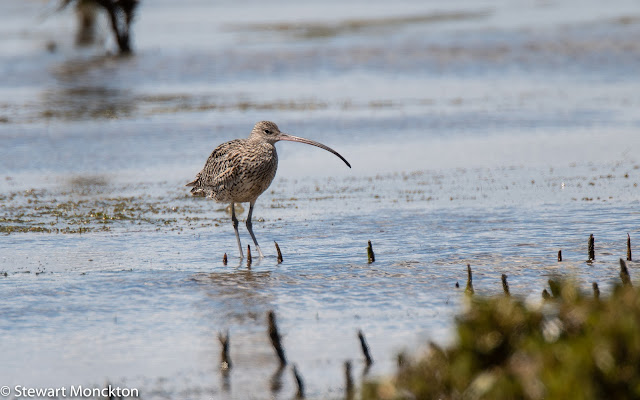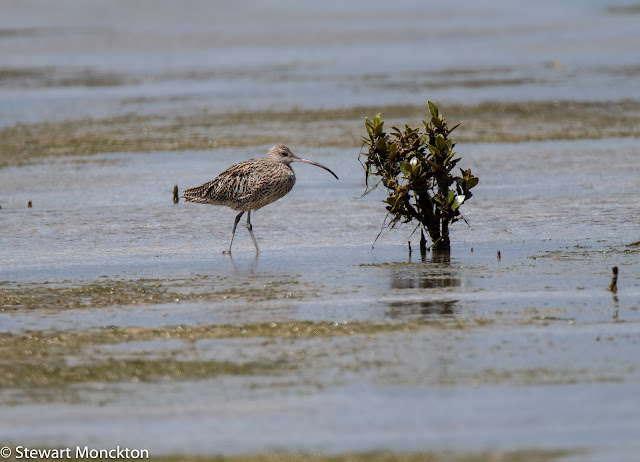Well, I finally managed to get away for a walk and some birding. Its been far too long! And even if the weather was shocking at times over the weekend it was just so great to get away. I hope this may finally be the sign that I can get back to some form of normal.
I spend more than a few hours in a public bird hide near the coastal village of Toora, which is in East Gippsland, about three hours east of Melbourne. Friday was more or less a wash out, but Sunday was a much better day, and I managed to get some images of birds I have not photographed before, as well as showing these species to some birders who had never seen them.
These photographs are of Eastern Curlews (Numenius madagascariensis), the worlds largest shore bird. They are justifiably famous for their 'improbably long, strongly down-curved bill' - which you can see clearly in these pictures. Both sexes have long bills, but the male bill really is very long! These birds are also famous for being very cautious, and even though I was in a hide the birds never really came that close. Long, long lenses and cropping are the order of the day for this species.
Eastern Curlews breed in Siberia and Manchuria, but most (75%+) spend the southern summer in Australia. There are probably less than 50,000 of these birds left in the wild, so having more that 20 in front of the hide was a great thing to see. Like many other shore birds this species is threatened because of habitat loss, most especially in China's Yellow sea.
As ever, to join in with WBW just click on the Blue Button below.
Hope everyone who reads this is also coming out of the the C19 blues - and I hope to be in touch (via blogs) soon. SM










Hari Om
ReplyDeleteIt takes skill to carry that beak off!!! What a delight - adding to my own recent rare viewing of a (Eurasian) curlew up this way, it reminds one of the precarious nature of Nature... YAM xx
Amazing how the curlew manages anything with that length of bill! Great captures.
ReplyDeleteA lovely and instructive series, Stewart. One feels more knowledgeable about this bird after viewing them.
ReplyDeleteWell Stewart this is a snap today. We chose the same bird! However you say male bills are longer however certainly our Curlews are as follows - The main visible difference between the sexes is that the female has a longer bill, but the female is also larger than the male. Are your Curlew different? Thanks for hosting, take care adn I am glad you are getting out more now and have a great week ahead.
ReplyDeleteGreat shots! A bird with chopsticks 😀
ReplyDeleteGadding about time is here again it seems, and with curlews as the star attraction who can resist? I have been doing some preliminary checking on the price of airline tickets and they have gone through the roof, with nary a deal in sight. Let's hope that changes.
ReplyDeleteHello Stewart,:=) You did a great job of capturing this rare species of Curlew from a distance. The one I saw in the south of Portugal was larger, but it's beak was not quite as long as the Eastern Curlew.
ReplyDeleteThat's quite a bill..I would think it might be difficult for it to keep it's balance..Probably not!! Great shots!! Happy that you got out for a bit..I may not have any birdies to share thuis week..Enjoy the rest of your week..
ReplyDeleteLooking at this bird, the first thing that went through my mind is...it's beak/bill is SO long, why doesn't it tip over???...jp...LOL!
ReplyDeleteGreat pictures! Glad you mentioned habitat loss because it needs to be understood by more people.
ReplyDeleteWow - those bills are something! Great pictures. Yes, we could all use a bit of normalcy.
ReplyDelete